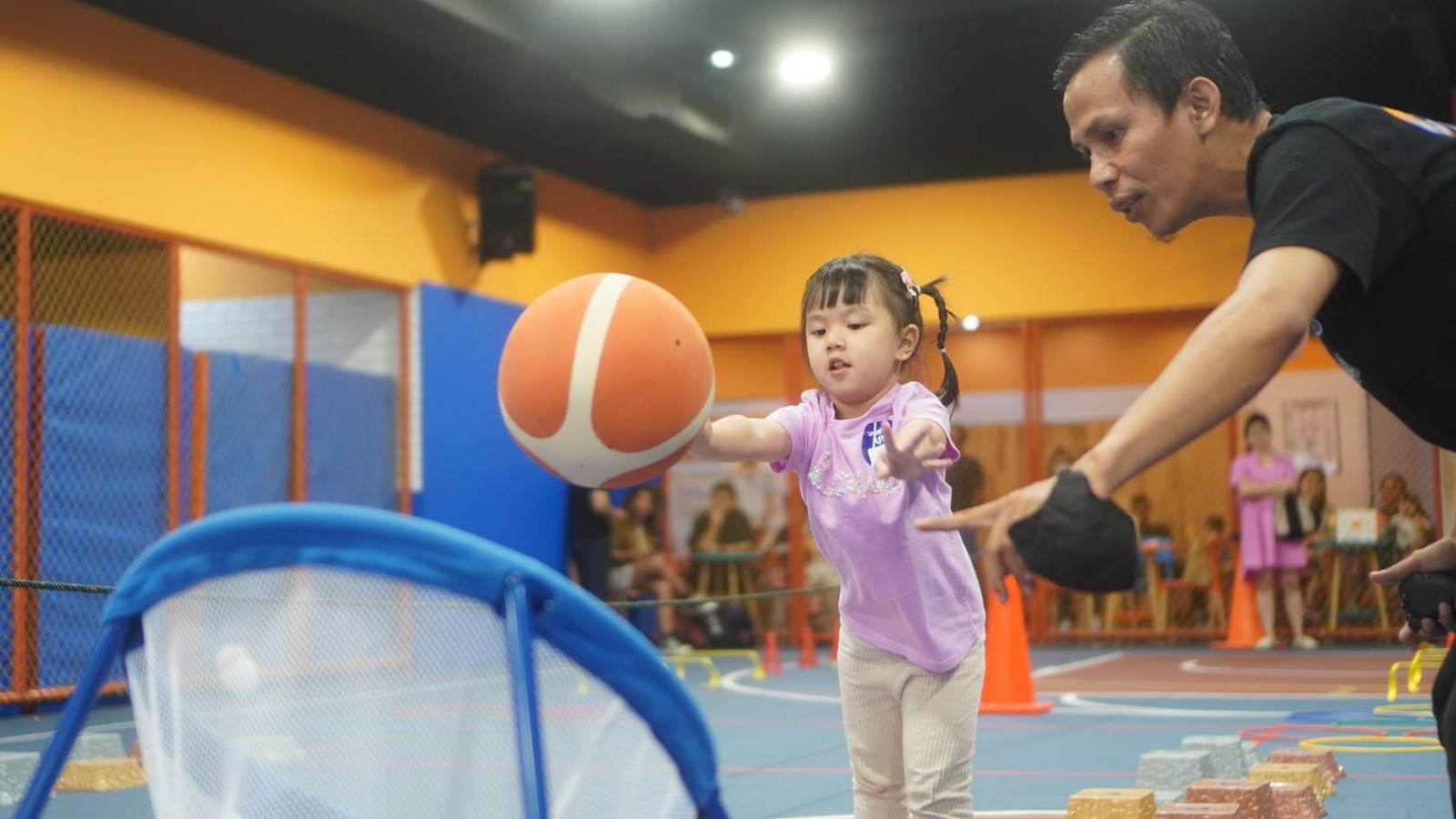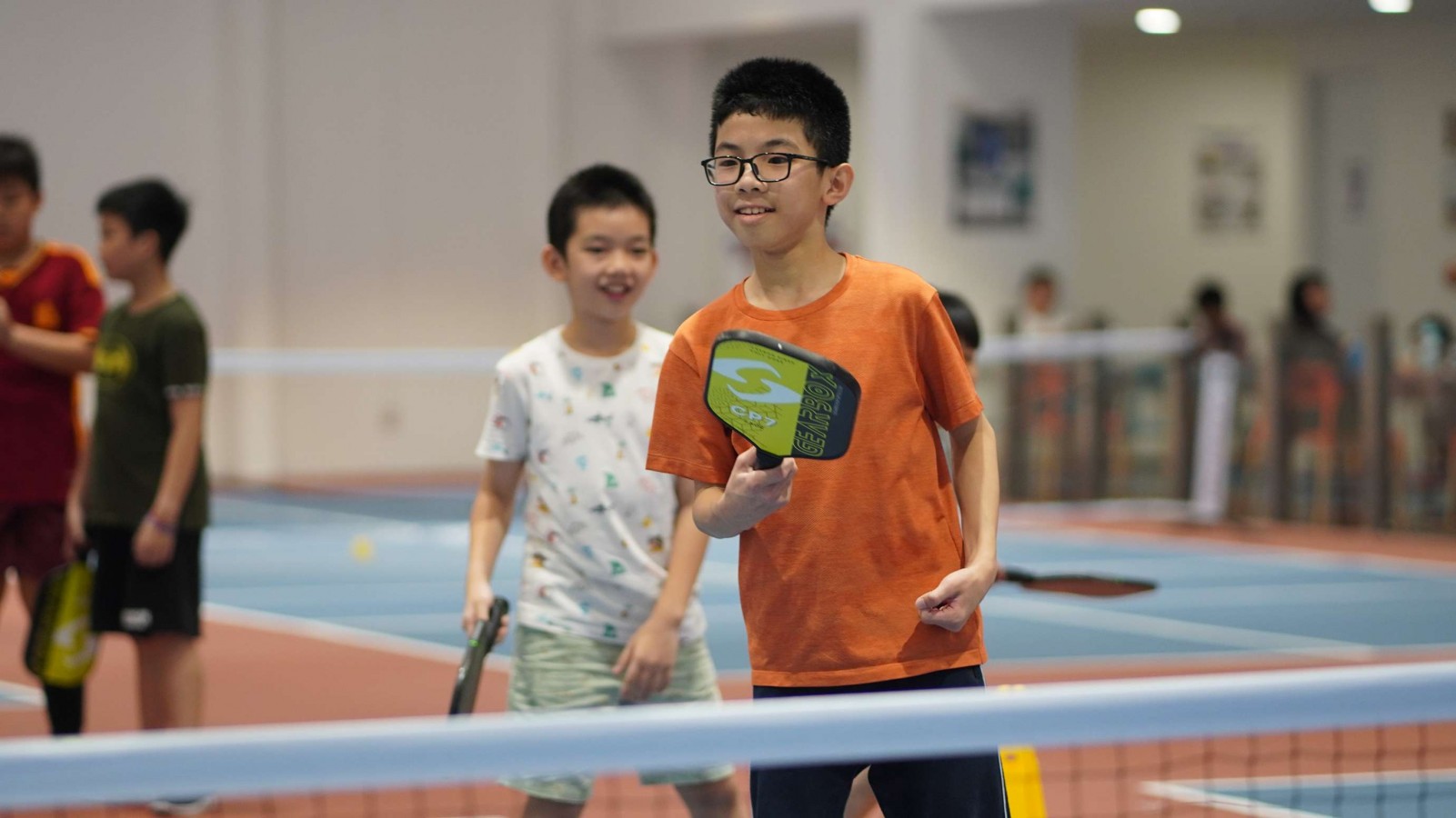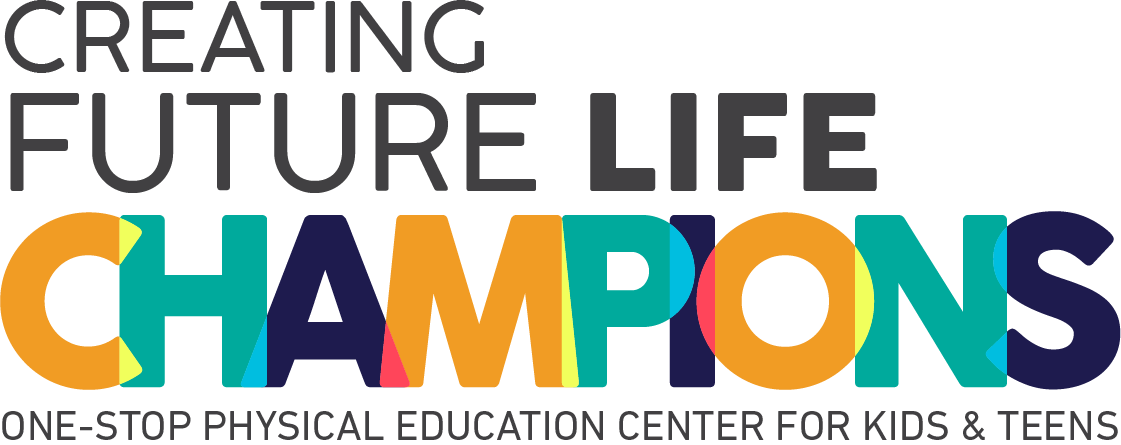Complete Guide for Parents in Teaching Kids Sports

As parents, we all want our children to lead healthy, active lifestyles and develop essential skills that will benefit them throughout their lives. Engaging children in sports from a young age is not only a fun and enjoyable way to promote physical fitness but also fosters valuable life skills such as teamwork, discipline, and resilience.
With this article, we'll explore how parents can effectively promote and teach their kids sports, the importance of sports participation for children, and the key skills children can develop through sports.
Teaching Children Sports
The most difficult thing to implement is definitely teaching. Teaching children is a challenge for parents. Teaching sports to your child requires patience and dedication. Here are some tips:
1. Start Early
Introduce children to sports at a young age by providing them with age-appropriate equipment and opportunities to engage in physical activities. Encourage exploration and experimentation with different sports to help them discover their interests and abilities.
2. Be Supportive
Encourage and support your child's participation in sports by attending their games, cheering them on, and providing positive reinforcement. Celebrate their achievements and milestones, regardless of the outcome, to boost their confidence and motivation.
3. Lead by Example
Serve as a role model for your child by demonstrating an active and healthy lifestyle yourself. Engage in physical activities together as a family, such as playing catch, going for bike rides, or taking nature walks, to instill a love for sports and fitness from an early age.
4. Make it Fun
Keep sports activities fun and enjoyable for children by incorporating games, challenges, and playful activities that cater to their interests and preferences. Focus on the process of learning and improvement rather than solely on winning or competition.
5. Encourage Balance
While sports can offer numerous benefits, it's essential to encourage a balanced approach that prioritizes enjoyment, skill development, and overall well-being. Avoid placing excessive pressure or expectations on children and allow them to explore different interests and activities at their own pace.
Important Sports Skills for Children
Sports skills are about helping children develop coordination, confidence, and a love for movement. Here are six essential sports skills every child can learn and how parents can help teach them:
1. Throwing and Catching
Throwing and catching help children develop hand-eye coordination, timing, and focus. Parents can start by using a soft ball such as a foam or beach ball to make it less intimidating. Stand a few steps apart and demonstrate how to throw underhand first, encouraging your child to use both hands and watch the ball closely.
When catching, teach them to keep their eyes on the ball and use their hands like a “basket” to receive it. As they improve, you can increase the distance between you or use a smaller ball to make it more challenging.
2. Jumping and Hopping
Jumping builds leg strength, balance, and coordination, while hopping on one foot improves stability and control. Both essential for sports like track and field, basketball, or gymnastics. Parents can make this skill fun by turning it into a game.
Encourage your child to jump over lines on the floor, hop off low steps, or play hopscotch. Include both two-foot jumps and one-foot hops, switching legs to develop even strength. You can also create a mini obstacle course at home or in the park where your child jumps over small cones or cushions, making practice both active and exciting.
3. Running
Running is one of the most natural movements for kids and helps develop endurance, speed, and coordination. It’s an essential skill for nearly every sport, from soccer to basketball. Parents can encourage running through short, playful bursts — for example, playing tag, relay races, or racing to a nearby tree.
Teach children to keep their heads up, arms bent at the elbows, and legs moving in rhythm for better form. To make running practice more fun, turn it into a “superhero run” or “race against the clock,” so it feels like play rather than exercise.
4. Kicking
Kicking helps improve leg strength, coordination, and balance, especially important in sports like soccer or kickball. To teach this skill, parents can start with a large, soft ball. Show your child how to step forward with one foot and kick with the other while keeping their balance.
Encourage them to aim for a target such as kicking between two cones or into a box. To make it more engaging, set a challenge like “how many times can you kick the ball into the goal in 30 seconds?” This keeps kids motivated and excited to improve.
5. Ball Bounce (Dribbling)
Dribbling or bouncing a ball helps children build hand control, timing, and concentration. It’s a fundamental skill for basketball, but also a great way to strengthen overall coordination. Parents can start by giving their child a medium-sized rubber ball and practicing bouncing it once and catching it.
Once comfortable, encourage continuous dribbling with one hand, then switch to the other. Remind your child to keep their eyes forward instead of looking down at the ball to develop awareness. To make practice fun, set challenges like “how many bounces can you do before the ball rolls away” or “dribble while walking across the room.”
6. Stopping and Starting
Learning how to stop and start builds balance, control, and quick reactions, which are essential in almost every sport. It also helps children stay safe by teaching them to manage their momentum. Parents can use simple and fun games like “Red Light, Green Light” or “Freeze Dance,” where kids run and then stop suddenly when the signal changes.
These games help children learn how to control their movements and stay balanced when they stop. As children grow older, parents can introduce sports drills that involve sprinting and suddenly changing direction to further improve agility and reaction time.
Importance of Sports Participation for Children
Perhaps children nowadays feel that sports are just a game that is not important. But eventually they will learn how important sports are for children, even in the long run. Here are other important benefits:
A. Physical Health
Engaging in sports helps children develop strength, coordination, flexibility, and cardiovascular fitness, promoting overall physical health and well-being. Regular physical activity also reduces the risk of obesity, heart disease, and other chronic health conditions later in life.
B. Social Development
Sports provide children with opportunities to interact with peers, develop friendships, and learn valuable social skills such as teamwork, communication, and sportsmanship. Working together towards common goals fosters a sense of camaraderie and belonging.
C. Emotional Well-being
Participating in sports boosts children's self-esteem, confidence, and resilience by providing opportunities for success, overcoming challenges, and learning from setbacks. Sports also serve as a healthy outlet for stress, anxiety, and negative emotions, promoting emotional well-being and mental health.
D. Academic Performance
Research has shown that children who participate in sports demonstrate improved concentration, discipline, and time management skills, which can positively impact their academic performance and success in school. Engaging in sports also teaches children valuable lessons about goal setting, perseverance, and responsibility.
Enjoy Teaching Your Kids, Parents!
As parents, we play a crucial role in promoting our children's physical, social, and emotional development, and engaging them in sports from a young age is one of the most effective ways to achieve these goals.
It's not easy and definitely requires a process, but children should know the benefits of physical education from an early age. If parents are busy and have limited time for teaching, they can enroll their children in the Sports & Performing Arts Academy or the multi-sports class at Rockstar Academy.
Through Rockstar Academy's multi-sports programs, parents can provide their children with valuable opportunities to explore, learn, and grow through sports in a fun and playful environment.
Rockstar Academy's multi-sport programs are also accompanied by the opportunity to participate in the RockOlympics. RockOlympics provides a unique platform for every student, starting as young as 1 year old, to push themselves beyond their limits and savor the rewards of their hard work.
Additionally, Rockstar Academy also provides a free trial class that you can easily sign up to experience the class first hand!
FAQ
What age groups are Rockstar Academy's multi-sports programs suitable for?
Rockstar Academy's multi-sports programs are suitable for children of all ages, from toddlers and preschoolers to older children and teens. We offer age-appropriate activities and curriculum tailored to each developmental stage to ensure that all participants have a fun and rewarding experience.
How do I enroll my child in Rockstar Academy's multi-sports programs?
To enroll your child in Rockstar Academy's multi-sports programs, simply visit our website or contact our enrollment team for more information. We offer flexible scheduling options, convenient locations, and affordable pricing plans to accommodate busy families and provide access to high-quality sports programming for children of all backgrounds.



